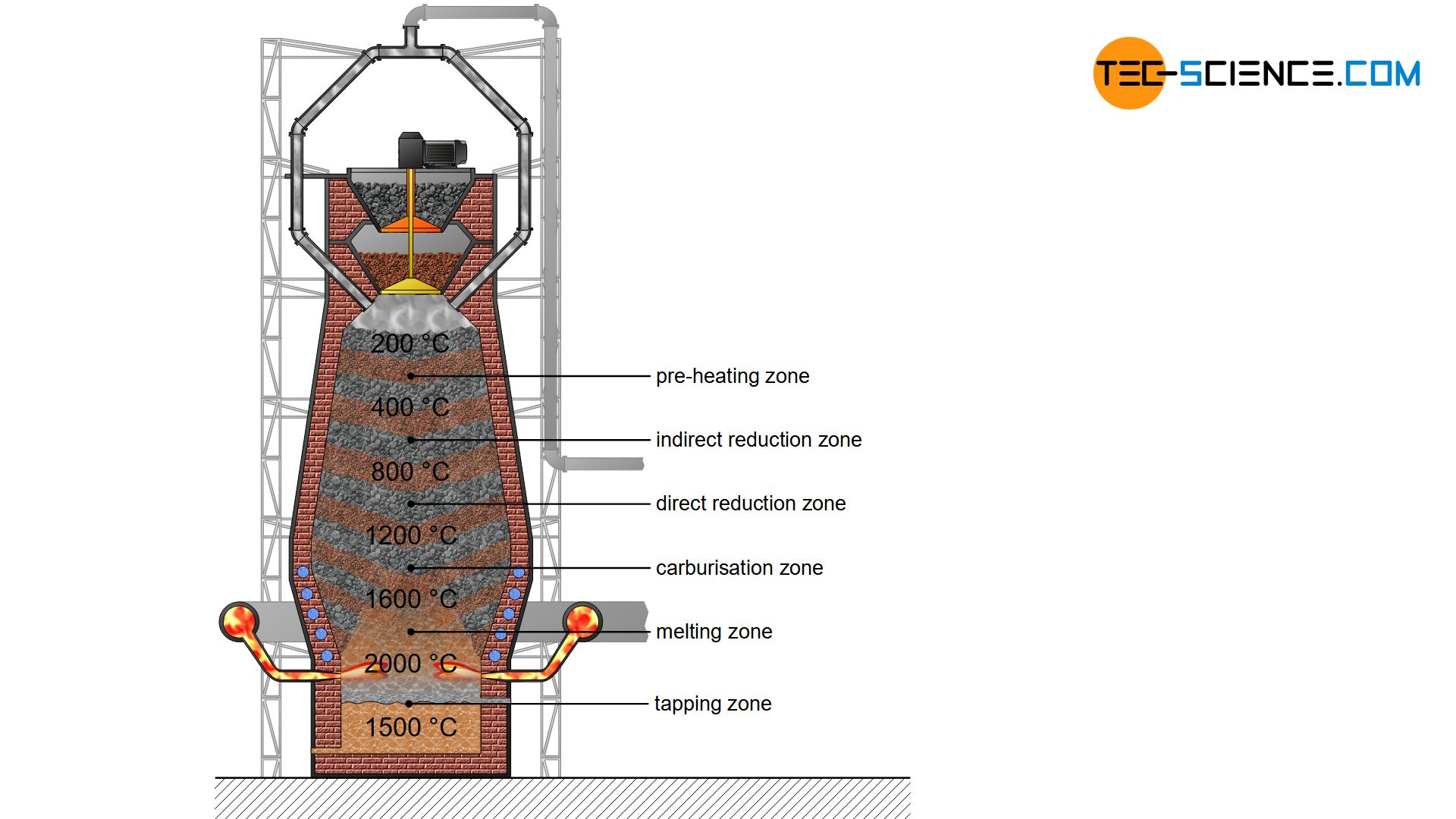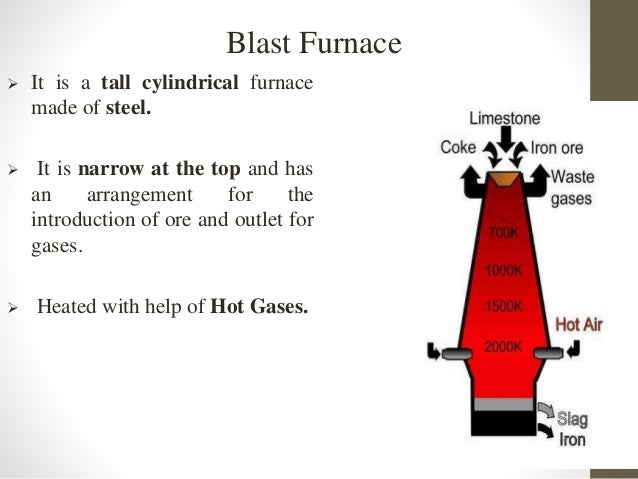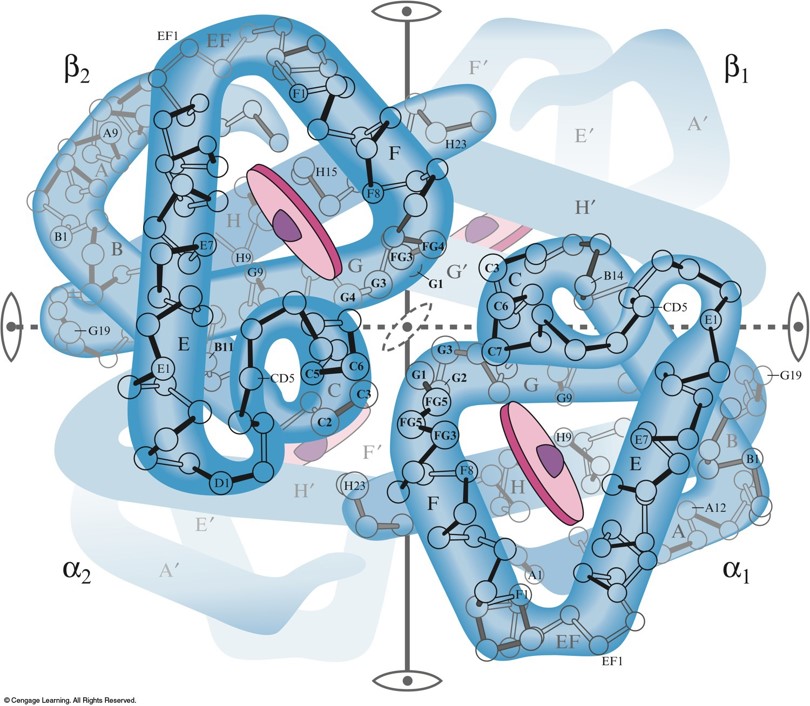42 diagram of blast furnace with labels
Draw a neat and labelled diagram of blast furnace. Draw a neat and labelled diagram of blast furnace. Medium. Open in App. Solution. Verified by Toppr. Was this answer helpful? 0. 0. Similar questions. In blast furnace, there is a steady increase in temperature from bottom to top. Medium. View solution > Make a labelled diagram of the furnace used in the process of roasting. Blast Furnace - an overview | ScienceDirect Topics Blast furnaces have grown considerably in size during the twentieth century. In the early days of the twentieth century, blast furnaces had a hearth diameter of 4-5 m and were producing around 100,000 THM per year, mostly from lump ore and coke. At the end of the twentieth century the biggest blast furnaces had between 14 and 15 m in hearth diameter, and were producing 3-4 million tons of ...
Metalwork - Materials - Blast Furnace - PracticalStudent.com A Blast Furnace is about 100ft. high and produces abut 1000 tons of molten Iron a day. It is made from steel. On the diagram below of the Blast Furnace, just click on the labels for a more detailed description. If you scroll past the diagram you can read about the Blast Furnace Process.

Diagram of blast furnace with labels
Blast Furnace: Introduction, Definition, Construction, Working ... The detailed construction of blast furnace is categorized into two zones which are physical zones and chemical zones. In the physical zone, the structural system of this blast furnace is divided into five sections that include bosh, shaft, belly, hearth, and tuyeres. Draw the diagram of blast furnace and label its parts. - Sarthaks Draw the diagram of blast furnace and label its parts. cbse; class-10; Share It On Facebook Twitter Email. 1 Answer +1 vote . answered Apr 16, 2020 by KavitaRoy (48.6k points) selected Apr 16, 2020 by Devanshi . Best answer. The diagram of blast furnace used in the extraction of iron is as shown. ... blast furnace | Definition, Temperature, Diagrams, & Facts Modern blast furnaces range in size from 20 to 110 metres (70 to 360 feet), have hearth diameters of 6 to 15 metres (20 to 50 feet), and can produce from 1,000 to about 15,000 tons of pig iron daily. Steelmaking accounts for about 8 percent of global greenhouse gas emissions—the most of any industry—and these emissions contribute to global warming.
Diagram of blast furnace with labels. The Blast Furnace Diagram (7K) - Creative Chemistry The Blast Furnace Diagram (7K) N-m05-22 (© N. Saunders 2000) The Blast Furnace 1. Use the text book to help you to: a) Label the three parts shown by the labelling lines. b) Label the six arrows. c) Add other information that you think is important. 2. Carefully cut out your labelled diagram and stick it into your book. The Blast Furnace 1. PDF The Principle of Blast Furnace Operational Technology and Centralized ... of #1, #2 and #3 blast furnaces at the Kakogawa Works, which were constructed after the #3 blast furnace at the Kobe Works, increased by 1,000 m3. The Kakogawa #1 blast furnace, which led the way, was one of the first furnaces domestically to install a movable armor and the first domestically to install an in-furnace gas sampler, which served Blast Furnace Process - an overview | ScienceDirect Topics Typical sinter suitable for blast furnace process is from 15 to 25 mm, as is illustrated in Figure 1.1.10 [ 22 ]. Another important property is the disintegration of sinter in reduction, which occurs during the transformation of hematite to magnetite, and is related to the fraction of secondary hematite. Blast Furnace Design, Zones and arrangements for Ironmaking The equipment and systems of modern Blast Furnace Technology are designed for the harsh environment in the ironmaking operations, meeting the demands of reliable operation and minimal maintenance requirements. Hot metal production rates of 8000 - 10000 tpd, fuel rates of around 450 - 470 kg/thm (270/275 kg coke plus 175/225 kg coal ...
Cross-section diagram of a blast furnace - Hagley Digital Archives Elevation section of a mid 20th century blast furnace. Various temperature and chemical reaction zones are shown, with the basic physical components labeled. Likely created between 1930 and 1960. Subject(s) Blast furnaces Metallurgical plants--Equipment and supplies. Find all items with name(s) American Iron and Steel Institute. Outline of blast furnace. (Online version in color.) | Download ... Figure 1 shows the outline of a blast furnace, where the coke and the iron ore are loaded from the top of the furnace, and the hot metal and its viscous byproduct, i.e. the slag, are drained from ... Answered: Complete the following labels for the… | bartleby Complete the following labels for the diagram of the blast furnace for extracting iron. The labels fit in places A-F on the diagram. molten iron out 1500°C hot gases out blast of hot air in mixture of iron ore, coke and limestone in molten slag out Expert Solution Want to see the full answer? Check out a sample Q&A here See Solution star_border Draw a neat diagram of blast furnace used in the extraction of ... Click here to get an answer to your question ✍️ Draw a neat diagram of blast furnace used in the extraction of iron and label and parts?
PDF The Blast Furnace - Think Bank Education labels themselves. Then ask pupils to come to the SMART Board™ interactive whiteboard and drag the labels to the correct position on the diagram. You can refer back to page 6 to see the completed diagram. Page 8 Activity 3 Page 6 shows a completed diagram of the blast furnace for illustrative purposes. This diagram is also found in Main Parts of a Furnace (with Diagram) - Upgraded Home The heat exchanger, burner, flue, ductwork, and ventilation pipes are the main parts of a furnace. Electric furnaces are unique and feature a contactor, sequencer, and transformer. Gas furnaces have key parts such as gas valves and draft inducer motors that electric furnaces don't have. With that said, we've drawn up a list of all the ... Blast furnace - Wikipedia A blast furnaceis a type of metallurgical furnaceused for smeltingto produce industrial metals, generally pig iron, but also others such as leador copper. Blastrefers to the combustion air being "forced" or supplied above atmospheric pressure. [1] Draw the diagram of the blast furnace used in the extraction of iron ... Find an answer to your question Draw the diagram of the blast furnace used in the extraction of iron and label the molten iron. rbrohan3935 rbrohan3935 3 hours ago Chemistry Secondary School Draw the diagram of the blast furnace used in the extraction of iron and label the molten iron. New questions in Chemistry. write three uses of petroleum.
Draw a labelled diagram of blast furance for the extraction of iron? Draw the diagram of a blast furnace used in the extraction of iron and label the following parts : a) Molten iron b) Cone cup arrangement. Medium. View solution > Draw a diagram of the blast furnace used in the extraction of Iron and label the parts. Medium. View solution >
Solved The blast furnace 1. Complete the following labels - Chegg Complete the following labels for the diagram of the blast furnace for extracting iron. The labels fit in places A-F on the diagram. molten iron out 1500 °C hot gases out blast of hot air in mixture of iron ore, coke and limestone in molten slag out F D 2. Write balanced chemical equations for these reactions which occur in the blast
Blast Furnace and Process Description - Chemical Engineering World A schematic diagram of a blast furnace is shown in Fig. 1. Blast Furnace and Process Description :- Blast furnace process overview Process Description In the upper part of a hearth about half meter below the edge of the bosh, opening

Diagram Of Modern Blast Furnace Stock Vector Art & More Images of Black Color 944406644 | iStock
Draw a neat diagram of the blast furnace used in the class 11 chemistry ... Draw a neat diagram of the blast furnace used in the extraction of iron and label the parts. Answer. Verified. 196.5k+ views. Hint: Iron is extracted from iron ores such as haematite contain iron(III) oxide, ${ Fe }_{ 2 }{ O }_{ 3 }$ in a huge container called a blast furnace. Now you should try to answer this question.
The Blast Furnace - Iron Production A simplified diagram of a Blast Furnace is drawn below. A typical blast furnace may be up to 32 metres in height and 10 metres in diameter. They have thick steel sides, lined with refractory bricks, to ensure that heat is not lost. Blast furnaces are used continuously and are only shut down when their brick lining needs replacing.
Blast Furnace: Definition, Construction or Parts, Working Principles ... A blast furnace is a large metallic structure that is about 30 meters tall and 10 meters in diameter. It is tapered from the top and bottom with its maximum diameter below its geometric center. The pig iron produced in the process can be used for the production of different forms of steel by mixing impurities Now we will look at construction,
Schematic diagram of the blast furnace process. - ResearchGate Molten iron quality (MIQ) indices prediction based on data-driven models is an important way to monitor product quality and smelting status in the blast furnace ironmaking process. However, some ...
Blast furnace process - tec-science Blast furnace process By tec-science - 06/21/2018 17295 In the blast furnace, the iron ore reacts with the carbon contained in the coke to form grey or white pig iron. 1 Combustion process 2 Boudouard reaction 3 Preheating 4 Indirect reduction zone 5 Direct reduction zone 6 Carburizing zone 7 Melting zone 8 Tapping zone Combustion process
Blast furnace - Teachit A clear simple diagram of the blast furnace for students to label. There is also a PowerPoint version, click to reveal the labels, great for a quick revsion exercise. 54 KB 73.89 KB 209.5 KB Add to favourites Store and/or access your personal data on a device.
BLAST FURNACE - YouTube BLAST FURNACE EXTRACTION OF IRON FROM BLAST FURNACE Class 12 NCERT ChemistryBlast furnace Working animation - Extraction of iron metallurgy of iron. Iron an...
Category:Drawings of blast furnaces - Wikimedia Commons Media in category "Drawings of blast furnaces" The following 136 files are in this category, out of 136 total. Agricola blast furnace ... EB1911 Iron and Steel - Fig. 12.—Diagram of the Carnegie Blast-Furnace Plant at Duquesne, Pa.jpg 900 × 375; 112 KB. EB1911 Iron and Steel ...
Draw the diagram of the blast furnace used in the extraction of iron ... Talking about the composition of blast furnaces it is composed of steel making the differentiation with the bricks. Now, we can see in the diagram that carbon forms coke, iron ore, and limestone is being discarded from the top, and from the bottom there is an entrance of hot air blast.
blast furnace | Definition, Temperature, Diagrams, & Facts Modern blast furnaces range in size from 20 to 110 metres (70 to 360 feet), have hearth diameters of 6 to 15 metres (20 to 50 feet), and can produce from 1,000 to about 15,000 tons of pig iron daily. Steelmaking accounts for about 8 percent of global greenhouse gas emissions—the most of any industry—and these emissions contribute to global warming.
Draw the diagram of blast furnace and label its parts. - Sarthaks Draw the diagram of blast furnace and label its parts. cbse; class-10; Share It On Facebook Twitter Email. 1 Answer +1 vote . answered Apr 16, 2020 by KavitaRoy (48.6k points) selected Apr 16, 2020 by Devanshi . Best answer. The diagram of blast furnace used in the extraction of iron is as shown. ...
IGCSE Chemistry 2017: 2.24C: Be Able to Comment on a Metal Extraction Process, Given Appropriate ...
Blast Furnace: Introduction, Definition, Construction, Working ... The detailed construction of blast furnace is categorized into two zones which are physical zones and chemical zones. In the physical zone, the structural system of this blast furnace is divided into five sections that include bosh, shaft, belly, hearth, and tuyeres.














Post a Comment for "42 diagram of blast furnace with labels"